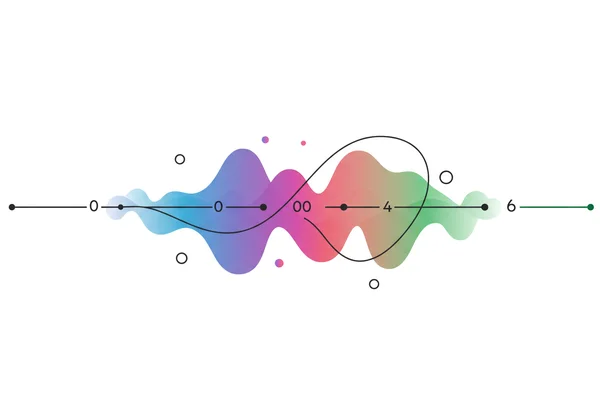Kinsey Scale: Relevance, Limitations & Enduring Legacy
The Kinsey Scale is a foundational tool in the study of human sexuality, a concept that has shaped conversations and research for decades. Originally published in the mid-20th century, it challenged the rigid, binary view of sexual orientation. But as our understanding of identity becomes more nuanced and inclusive, many people find themselves asking a critical question: Is the Kinsey Scale still relevant today? This article offers a balanced exploration, delving into its historical importance, acknowledging its modern criticisms, and examining why it continues to be a valuable tool for self-discovery.
Embarking on a journey to understand yourself is profoundly personal. For those curious about where they might fall on this spectrum, a confidential and insightful tool for self-discovery can be a helpful starting point. Let's explore this iconic scale, appreciating its impact while honestly assessing its role in today's world.

The Kinsey Scale's Groundbreaking Legacy & Historical Context
Before Alfred Kinsey's work, societal and scientific views on sexuality were largely confined to a strict heterosexual/homosexual binary. The sexual orientation history was often one of silence and pathologizing. The Kinsey Scale shattered this paradigm by introducing the idea that sexuality is not an either/or proposition but a fluid continuum. This was revolutionary, opening doors for new ways of thinking and speaking about human attraction and behavior.
The scale's introduction had a profound effect, suggesting that a significant portion of the population had experiences that did not fit neatly into a single box. It provided a vocabulary and framework for people to understand feelings they may have previously found confusing or isolating. For many, it was the first time they saw their own experiences reflected in scientific research.
Pioneering the Sexuality Spectrum: Beyond Binary Labels
The most significant contribution of the Kinsey Scale was its introduction of the sexual spectrum. Instead of two opposing categories, Kinsey proposed a seven-point scale, from 0 (exclusively heterosexual) to 6 (exclusively homosexual). This framework validated the experiences of countless individuals who felt attraction to more than one gender. By presenting sexuality as a gradient, it fostered a more inclusive and non-binary understanding of human desire, a concept that was decades ahead of its time.

Shifting Societal Understanding: Kinsey's Cultural Impact
The social impact of the Kinsey Reports was immense. They sparked widespread public debate, challenging long-held moral and social norms about sexuality. Although controversial, the research forced a necessary conversation and paved the way for future sexology research and the LGBTQ+ rights movement. It marked a critical shift from viewing certain sexual behaviors as deviant to understanding them as part of the natural range of human experience. This framework continues to help people explore the scale and their place on it.
Understanding the Kinsey Scale's Limitations
To appreciate the scale's relevance today, we must also acknowledge the Kinsey Scale limitations. While groundbreaking for its time, the model is a product of its era and has several shortcomings when viewed through a modern lens. Acknowledging these critiques is essential for using the scale as a tool for reflection rather than a definitive label. Approaching the scale with a critical eye enhances understanding and trust.
The Heteronormative Framework: Why It's Not Exhaustive
One of the most significant critiques is its heteronormativity. The scale measures attraction on a single axis between heterosexuality and homosexuality. This framework doesn't adequately account for other sexual orientations, such as asexuality (a lack of sexual attraction) or pansexuality (attraction regardless of gender). It also operates on a gender binary, which fails to capture the full diversity of gender identities that exist beyond male and female.
Snapshot vs. Fluidity: Capturing Evolving Identities
Another limitation is that the Kinsey Scale provides a static snapshot of a person's feelings and behaviors at a given time. However, we now understand that sexual fluidity is a real and valid experience for many. A person's attractions and identity can change and evolve throughout their life. The scale's fixed scoring system doesn't easily accommodate this dynamic process of identity evolution, which is a core part of many people's personal journeys.
Sampling Bias & Methodological Concerns in the Original Research
From a scientific standpoint, Kinsey's original research has faced criticism for its sampling methods. His study population was not fully representative of the general public, containing an overrepresentation of certain groups. While these methodological concerns are important for academic rigor, they don't necessarily negate the conceptual value of the scale as a tool for personal exploration and understanding.
Addressing Common Criticisms of the Kinsey Scale
Given its limitations, it's fair to ask about the Kinsey Scale criticism and whether it has been surpassed by more modern models. These questions are vital for anyone looking to use the scale for self-reflection. Answering them honestly allows us to position the scale properly—not as a perfect diagnostic tool, but as a historic and still-useful guidepost. For those interested in seeing how it applies to them, our kinsey scale quiz provides a private and modern interface.
Is the Kinsey Scale Outdated for Modern Identities?
In some ways, yes. The language and framework of the Kinsey Scale can feel outdated when discussing modern sexuality. It doesn't include terminology for identities like pansexual, asexual, or demisexual. However, its core concept—that sexuality exists on a spectrum—remains profoundly relevant. It serves as a foundational idea upon which more complex and inclusive models of sexuality have been built.

The Challenge of Fixed Categories in a Fluid World
The core challenge is how any scale attempts to categorize something as fluid as human experience. Human experience is rich, nuanced, and deeply personal; reducing it to a single number will always be an oversimplification. The scale should be seen as a conversation starter, not a final verdict. It helps us ask questions about ourselves, but the answers are ultimately our own to define and understand.
Why the Kinsey Scale Still Holds Relevance Today
Despite its flaws, the Kinsey Scale relevance endures. It remains a powerful and accessible entry point for people beginning to explore their sexuality. Its simplicity is both a limitation and a strength, making it less intimidating than more complex models. It provides a valuable service by validating the idea that it's okay not to fit into a neat, socially prescribed box.
A Foundational Tool for Personal Self-Exploration
For many, especially young people, the scale is a key tool for self-discovery. Taking a Kinsey Scale test can be an illuminating exercise, offering a moment of reflection on one's attractions, fantasies, and experiences. It can provide a sense of validation and belonging, assuring individuals that their feelings are a normal part of the human experience. It marks the beginning of a personal journey toward self-acceptance.
Its Enduring Value in Sexual Health & Education
In the fields of sex education and counseling, the scale remains a useful teaching aid. It's a simple way to introduce the concept of the sexuality spectrum and challenge binary thinking. By promoting a more nuanced understanding of orientation, it fosters empathy and reduces prejudice, contributing to a more informed and accepting society. This understanding is vital for fostering a healthier, more accepting society.
Sparking Broader Conversations About Sexuality
Perhaps the scale's most enduring legacy is its ability to spark open dialogue. Whether discussing results with a friend, partner, or therapist, it provides a common language to explore a sensitive topic. It helps people articulate their experiences and fosters conversations that lead to deeper connection and understanding. It’s a tool that can help you start the conversation with yourself and others.

Navigating Your Identity: The Kinsey Scale as a Guiding Tool
The Kinsey Scale is a complex tool with a rich history. It is neither a perfect measure nor an outdated relic. Instead, it occupies a valuable middle ground: a foundational concept that revolutionized our understanding of sexuality and remains a useful, if imperfect, guide for personal reflection. Its legacy is not in the specific numbers but in the powerful idea that sexuality is diverse and fluid.
Your identity is yours alone to define. If you're curious about where your own experiences might place you on this historic spectrum, we invite you to begin your exploration on our secure and private platform. It's a step toward deeper self-knowledge and acceptance.
Frequently Asked Questions About Kinsey Scale Relevance
Is the Kinsey Scale still considered relevant in modern discussions of sexuality?
Yes, it is. While more comprehensive models now exist, the Kinsey Scale's core concept of a sexuality spectrum remains highly relevant. It is valued as an introductory tool for self-exploration and education, helping to challenge rigid, binary views of sexual orientation.
What are the main criticisms leveled against the Kinsey Scale?
The main criticisms include its heteronormative framework (measuring sexuality only between heterosexual and homosexual), its failure to account for gender identities beyond the male/female binary, and its inability to capture the fluid nature of sexuality over a person's lifetime.
Does the Kinsey Scale account for sexual fluidity?
Not directly. The scale provides a static score based on experiences and feelings up to a certain point. It doesn't have a built-in mechanism to reflect how attractions can change over time, which is a key aspect of sexual fluidity.
Where can I take a Kinsey Scale test to understand my own sexuality?
You can explore your orientation in a safe and supportive environment right here. Our platform offers a user-friendly and confidential way to take our free test. It's designed to provide you with insights for personal reflection, helping you on your journey of self-discovery.